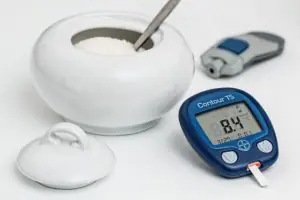Massage for diabetes is recommended for almost every person. With its help, you can normalize metabolism and restore blood circulation in the limbs and throughout the body. In other words, massage is an addition to the complex treatment of an ailment such as diabetes.
Of course, before embarking on such treatment, it is necessary to take into account a number of factors. Like any other procedure performed for treatment purposes, massage must be carried out in accordance with certain rules.
Benefits of the procedure
Before proceeding with the procedures, it is necessary to consider what benefits it can bring to the body. So, massage for diabetes can:
- activate metabolism;
- relax the body and thereby protect it from physical overload and stress;
- increase blood circulation, which is especially important in the presence of cardiovascular diseases;
- restore the regeneration of nerve fibers that suffer as a result of excessive amounts of glucose;
- activate biologically active points that are located throughout the body.

As for biologically active points, their number is about 700. They are closely related to organs and organ systems. During the massage, pressure is applied to these points, which in turn improves metabolism and blood circulation. Also, with the help of massage you can tone the body and reduce pain.
Before starting the procedure, you must thoroughly wash your body. If we are talking about foot massage, then you need to take a cleansing bath. It is worth considering that you should use warm water for this. Special requirements are also imposed on the specialist who will carry out the procedure. His hands should also be thoroughly cleaned. Otherwise, there is a high risk of infection under the patient’s skin, which may have invisible small cracks.
Type of massage for diabetes
For diabetes mellitus, the patient is prescribed a comprehensive treatment, which may include massage. Depending on the technology and frequency of execution, several types of massage are distinguished. The most common option is general massage. The procedure is carried out several times a week. Indicated for patients who are obese. With the help of such a massage, you can remove toxins from the body, cleanse the skin of dead cells, and also improve the patient’s sleep and overall well-being.
Pulse massage is an equally popular and common procedure prescribed for diabetes. Its peculiarity is that the patient can carry it out independently. The procedure is based on your own instinct. This means that if a person wants to stroke or scratch some part of the body, then this must be done. This desire occurs when fats, proteins and other nutrients have not been properly supplied to a part of the body. Self-massage has a beneficial effect on the healing and restoration of organs.
Local massage is performed directly on the areas of the body that most need it. So, such areas include the limbs, head, back and other parts of the body. Massage has a certain healing effect in different parts of the body. For example, performing a procedure on the back can improve blood circulation and straighten the back muscles. It also makes it possible to relieve pain that occurs as a result of various reasons.
Acupressure is an ancient and popular procedure that originated in the east. With this massage you can heal various diseases. Of course, this only applies to cases where the procedure is performed by specialists with many years of experience. Reflexology is widely used to both tone and relax the body. The procedure is carried out several times a week. At the end of the treatment, massage is performed only once a week.
Foot massage
People with diabetes are recommended to have a foot massage. He is very important. After all, in diabetes, the vessels and nerves of the legs are primarily affected. Massage of the lower extremities helps prevent the development of severe consequences of the disease. Therefore, doctors strongly recommend including the procedure in the comprehensive treatment of the disease.
Before doing a massage, you need to take a bath. This is done not only to cleanse the skin, but also to relax, which has a beneficial effect on ligaments and joints. It is important to remember that you should use only warm water for the bath. After this, the feet are sprinkled with powder. This helps prevent damage to the skin during the procedure.
The procedure begins with stroking the shin. Massage movements gradually move to the knee. In this case, the popliteal fossa remains at rest. When massaging your feet, you need to remember about your fingers. They need to be rubbed slowly. Particular attention is paid to the tendon and intermuscular space. It is in these parts of the body that blood circulation is disrupted first.
When massaging the lower extremities, you must also remember about the heel. I rub it with my fingers and pinch it. Finally, the Achilles tendon can also be massaged.
Massaging the pancreas
For a disease such as diabetes, doctors recommend massage of the pancreas. Of course, it is worth considering here that such procedures are contraindicated in acute pancreatitis. Massaging is carried out very carefully. In this case, you should pay special attention to your feelings. When the first signs of fatigue appear, the massage should be stopped.
The procedure can be easily performed at home. This explains its popularity among patients suffering from diabetes.
Contraindications for massage in diabetes
Despite all the indications of massage, many patients are interested in whether it is possible to do massage with diabetes. Doctors do not recommend using the procedure at your own discretion. First of all, you need to undergo an examination by a doctor, which will allow you to determine whether the patient has contraindications to the procedure. Thus, massage for diabetes is contraindicated during exacerbation of hyperglycemia, hypoglycemia and other associated pathologies. Of course, in some cases there are exceptions.



